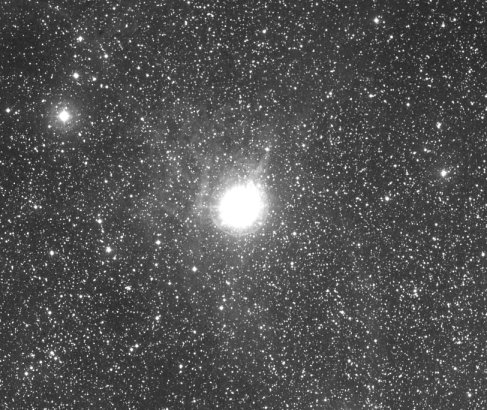
 |
Thirteen Monocerotis shines brightly at the center of the picture. It's surrounded by a faint reflection nebula caused by starlight scattering off thin dust in the area that is visible mostly to the east of the star (to the left) and that extends at least 10 light years out. Such nebulae are common around hot blue stars in the Milky Way. National Geographic-Palomar Sky Survey, California Institute of Technology. |